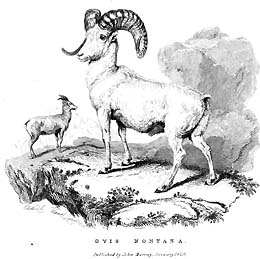On July 6, 1811, Canadian explorer David Thompson (1770 - 1857) records the first written description of the Methow Indians and the landscape along the Columbia River from Nespelem Canyon to the mouth of the Wenatchee River (present-day Ferry and Okanogan counties). Thompson, who heads the Columbia Department of the North West Company, is on a mission to determine whether the Columbia is navigable to the sea and whether it will provide a viable trade route for the fur company.
July 6: Nespelem Canyon to Wenatchee River
Thompson and his voyageurs spent the night of July 5 on the banks of the Columbia near the foot of the long series of rapids known as Nespelem Canyon, near a camp of friendly Nespelem Indians. "July 6th. Saturday. A cloudy rainy morning -- could not embark ‘till 6 1/2 Am. Our hosts found us early & notwithstanding the Rain smoked several Pipes" (Nisbet, MME, 106). The surveyor entrusted three large bags of roots to the custody of the Nespelem chief, then relaunched his canoe. As the river emerged from Nespelem Canyon and turned north, he noted the "high woody Mountains of the Oochenawga (Okanogan) River" ahead, but passed its mouth on the opposite side of the Columbia without stopping.
Around midmorning the Nor'Westers put ashore at an encampment of "Smeeth howes" (Methows) near the mouth of the Methow River in present-day Okanogan County.
"They came forward & sat down in a ring, & began smoking without any ceremony. The Women then advanced all ornamented with fillets & small feathers ... an old Man directed them to sit down all round the Men, on the outside with the Children. Thus placed they smoked with the Men, only the Women were permitted no more than a single Whiff of the Calumet, whilst the Men took from 3 to 6 Whiffs" (Nisbet, MME, 106).
The furmen accepted a gift of roasted salmon and serviceberries, "for the stranger must have a present made to him." Then a Sanpoil couple traveling with the Nor'Westers as interpreters explained Thompson’s plan to open a trade route to the sea and bring merchandise for trade, "which they thankfully received & wished us a good voyage." When Thompson inquired about the nature of the river ahead, the Methows assured him that it was "tolerable" as far downstream as the next tribe, which was as far as their knowledge extended.
When the furmen departed "these friendly people" at noon, the Methow chief and four men met them a short distance downstream at the Methow Rapids with horses to portage the cargo while the voyageurs ran down in the canoe. Thompson paid the men with several inches of tobacco for their trouble, then he and his paddlers beat into a stiff headwind as the Columbia traced a southerly course along the base of the Cascade foothills.
"We could have passed hours in viewing the wild scenery, but these romantic cliffs always indicated danger to us from the stream being contracted and forming whirlpools, very disagreeable companions on a River" (Thompson, Travels ii.242).
Here the party saw their first bighorn sheep of the voyage. One of the men went off in pursuit, but a following wind allowed the animal to escape. Two rattlesnakes that were slow to get out of the voyageurs’ path were not so lucky. They camped that evening "among high Rude lands" on the east bank of the river.

